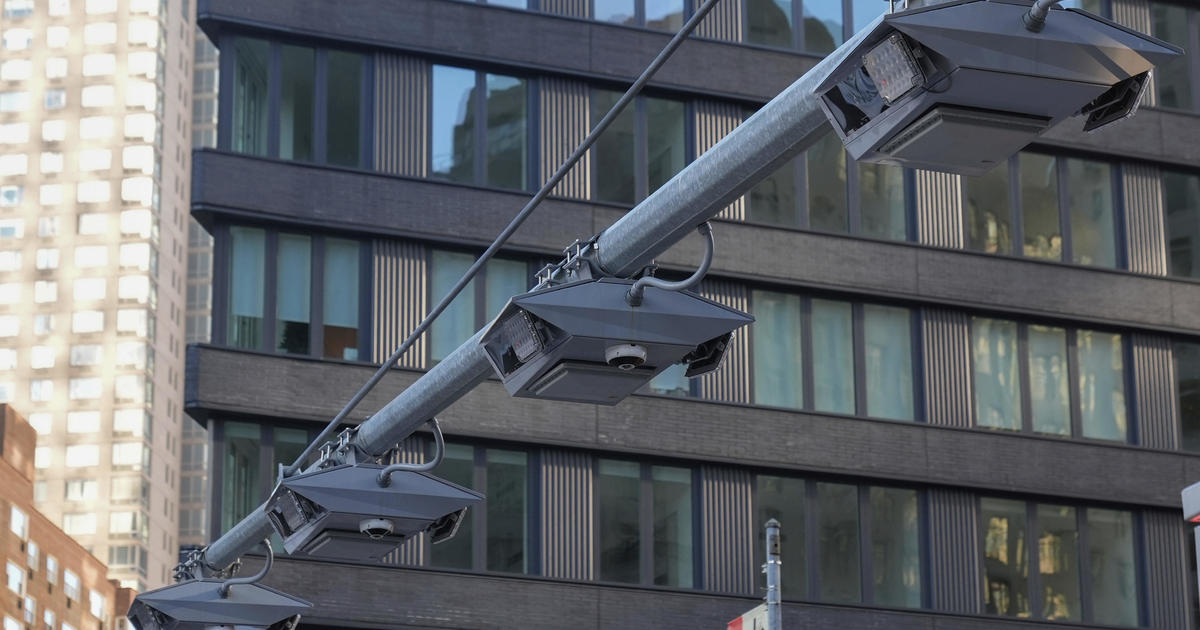Connecticut Officials Address Community Worries In Wake Of Recent Earthquakes
HARTFORD, Conn. (CBSNewYork) -- After a series of earthquakes, rattled residents gathered in an auditorium in Plainfield, Connecticut to find out how to prepare if a bigger one hits.
Plainfield First Selectman Paul E. Sweet and Dr. Alan Kafka, director of the Weston Observatory at Boston College, addressed residents' concerns while warning that a bigger earthquake is indeed a possibility.
"Is it possible that we would have a larger quake? The answer is yes," Sweet said.
As CBS2's Tracee Carrasco reported, state officials spent most of the earlier day Friday in a meeting to come up with a game plan to keep residents safe – treating earthquakes like any natural disaster.
"Whether you're talking about hurricanes or snowstorms and now earthquakes, it's all the same kind of common sense policies and practices," said Commissioner Dora B. Schriro, of the Department of Emergency Services and Public Protection.
But that was little comfort to rattled residents who fear another bigger earthquake could strike at any moment.
About a dozen earthquakes have occurred between Plainfield and Danielson in the span of four days -- and First Selectman Paul Sweet said people want information.
"We've been through floods, we've been through hurricanes, we've been through tornadoes, but we never had an earthquake," Sweet told WCBS 880's Paul Murnane. "Sixty years I've been on the planet, I haven't ever experienced an earthquake and just about everybody who lives in this town has not experienced it. It's new and there's a lot of unknown and a lot of anxieties."
Connecticut Officials Discuss State's Preparedness In Wake Of Recent Earthquakes
Residents have called 911 more than 300 times following the recent earthquakes in eastern Connecticut.
Seismologists at Boston College's Weston Observatory said most of the earthquakes have been under 2.0-magnitutde, but residents can still feel them.
"I was sitting in bed drinking my early morning cup of coffee before everybody got up and all of a sudden I heard this loud boom," said resident Marian Diggs.
Connecticut Officials Discuss State's Preparedness In Wake Of Recent Earthquakes
As CBS2's Lou Young reported, scientists said they were surprised by the recent earthquake activity.
Won-Young Kim, a research professor at Lamont-Doherty Observatory in Palisade, New York said the small quakes were not necessarily cause for alarm.
"Not really, because they're small. One problem is a bunch of earthquakes came within a week," Kim said.
The observatory sits high on the Palisades. It monitors 40 sensor stations in the Northeast U.S. and scientists said they have never seen earthquake activity in that part of Connecticut before.
The Lake Charles Fault has no history of activity in the decades scientists have been listening. The epicenter for the quakes is half a mile down, making it fairly shallow.
Many said they have never experienced an earthquake in the area, and they want to know why it is happening now.
"There's something that's making this thing happen," said William Tetreault of Plainfield, Connecticut.
At this point, scientists are ruling out manmade causes such as hydraulic fracturing – commonly known as fracking – since none is taking place in the area.
Scriro advised residents to fasten bookcases to the wall and water heaters and furnaces to the floor.
A 3.3-magnitude earthquake near the Connecticut-Rhode Island state line on Monday was the strongest New England earthquake since a 4.0-magnitude quake in Maine in 2012. The Monday quake surrendered its title on Thursday, when a 3.4 quake hit and left behind small cracks.
While the greatest earthquake activity in the country is in the west, scientists said earthquakes are "quite common" in many areas in the east.
"Even though Connecticut does not have a history of earthquake swarms, they do happen," Dr. Michio Kaku, Professor of Theoretical Physics at City University of New York, said on "CBS This Morning." "The northeast is different from California, there's no single gash like the San Andreas fault in the northeast, but we have small earthquake faults -- deeper, smaller and largely uncharted."
State geologist Margaret Thomas said the youngest rock formations around the Plainfield faults are nearly 300 million years old and there's nothing to indicate the area is waking up with a vengeance, WCBS 880's Paul Murnane reported.
"These quakes have not changed our risk estimates for Connecticut," Thomas said.
Connecticut's Insurance Department said quake policies often have deductibles that are based on the percentage of a home's value and not on a flat dollar amount.
Now may not be the best time to shop -- quake policies can be hard to come by during peak periods of seismic activity, Murnane reported.



